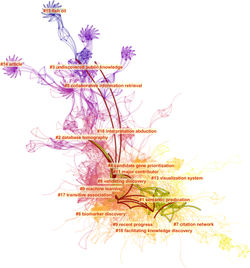Definition and History of Bibliometrics
– Bibliometrics is the use of statistical methods to analyze books, articles, and other publications.
– It is closely associated with scientometrics, which focuses on scientific metrics and indicators.
– The term ‘bibliometrics’ was first used by Paul Otlet in 1934.
– Alan Pritchard defined bibliometrics as the application of mathematics and statistical methods to books and other media of communication.
– Bibliometrics is a replacement for the term ‘statistical bibliography’.
– Bibliometric studies first appeared in the late 19th century.
– The Science Citation Index and citation network analysis laid the foundation for bibliometrics in the early 1960s.
– The development of computing tools after World War II contributed to the growth of bibliometrics.
– The emergence of the web and open science movement transformed the definition and purpose of bibliometrics.
– The Leiden Manifesto for Research Metrics in 2015 sparked a debate on the use and transparency of metrics.
Citation Analysis and Tools
– Citation analysis is a commonly used bibliometric method.
– It involves constructing a citation graph, which represents the citations shared by documents.
– Many research fields use citation analysis to explore the impact of their field, researchers, or specific papers.
– Bibliometrics tools have been integrated into descriptive linguistics, the development of thesauri, and evaluation of reader usage.
– Popular web search engines, like Google, have been influenced by bibliometrics methods and concepts.
Relationship with Scientometrics
– Bibliometrics and scientometrics overlap as they use similar data sources and methods.
– Scientometrics focuses on non-bibliographic indicators of scientific activity.
– Citation data has become the leading standard for quantitative scientific evaluation.
– The development of the web expanded bibliometrics to non-scientific production.
– Terms like infometrics, webometrics, and cybermetrics have been introduced but not widely adopted.
Early Experiments and Development
– Bibliometric analysis appeared in the late 19th and early 20th century.
– Early studies focused on scientific metadata and the expansion of scientific output.
– Citation indexes were first applied to case law in the 1860s.
– The emergence of social sciences inspired research on the science of science.
– Early bibliometrics and scientometrics work expressed normative views on the performance of researchers and institutions.
Development of Bibliometrics and Concentration of Research
– The field of bibliometrics emerged alongside the development of the Science Citation Index.
– Institutions in the mid-twentieth century played a significant role in motivating and facilitating research measurement.
– Influential figures in the field include John Desmond Bernal, Paul Otlet, and Robert K. Merton.
– Derek John de Solla Price, a follower of Bernal, made major contributions to bibliometrics through his publications.
– Price and Garfield recognized the structural inequality in science production, where a minority of researchers have a significant impact on subsequent research.
– Only a small percentage of papers receive a substantial number of citations.
– Price referred to the existence of an ‘invisible college’ of elite scientists.
– Eugene Garfield formulated a law of concentration in scientific publishing.
– The core literature for all scientific disciplines is limited to a group of no more than 1000 journals.
– The Impact Factor was devised by Garfield and Irving Sher in the 1960s.
– It is a simple ratio between the total count of citations received by a journal in the past year and its productivity in the past two years.
– The Impact Factor was used to select core journals featured in Current Contents and the Science Citation Index.
– Bibliometrics became a research field and a testing ground for quantitative policy evaluation.
– Garfield supported fundamental research in science history and sociology of science.
Bibliometrics is the use of statistical methods to analyse books, articles and other publications, especially in scientific contents. Bibliometric methods are frequently used in the field of library and information science. Bibliometrics is closely associated with scientometrics, the analysis of scientific metrics and indicators, to the point that both fields largely overlap.

Bibliometrics studies first appeared in the late 19th century. They have known a significant development after the Second World War in a context of "periodical crisis" and new technical opportunities offered by computing tools. In the early 1960s, the Science Citation Index of Eugene Garfield and the citation network analysis of Derek John de Solla Price laid the fundamental basis of a structured research program on bibliometrics.
Citation analysis is a commonly used bibliometric method which is based on constructing the citation graph, a network or graph representation of the citations shared by documents. Many research fields use bibliometric methods to explore the impact of their field, the impact of a set of researchers, the impact of a particular paper, or to identify particularly impactful papers within a specific field of research. Bibliometrics tools have been commonly integrated in descriptive linguistics, the development of thesauri, and evaluation of reader usage. Beyond specialized scientific use, popular web search engines, such as the pagerank algorithm implemented by Google have been largely shaped by bibliometrics methods and concepts.
The emergence of the Web and the open science movement has gradually transformed the definition and the purpose of "bibliometrics." In the 2010s historical proprietary infrastructures for citation data such as the Web of Science or Scopus have been challenged by new initiatives in favor of open citation data. The Leiden Manifesto for Research Metrics (2015) opened a wide debate on the use and transparency of metrics.
1912 NW 143rd Ave #24,
Portland, OR 97229, USA